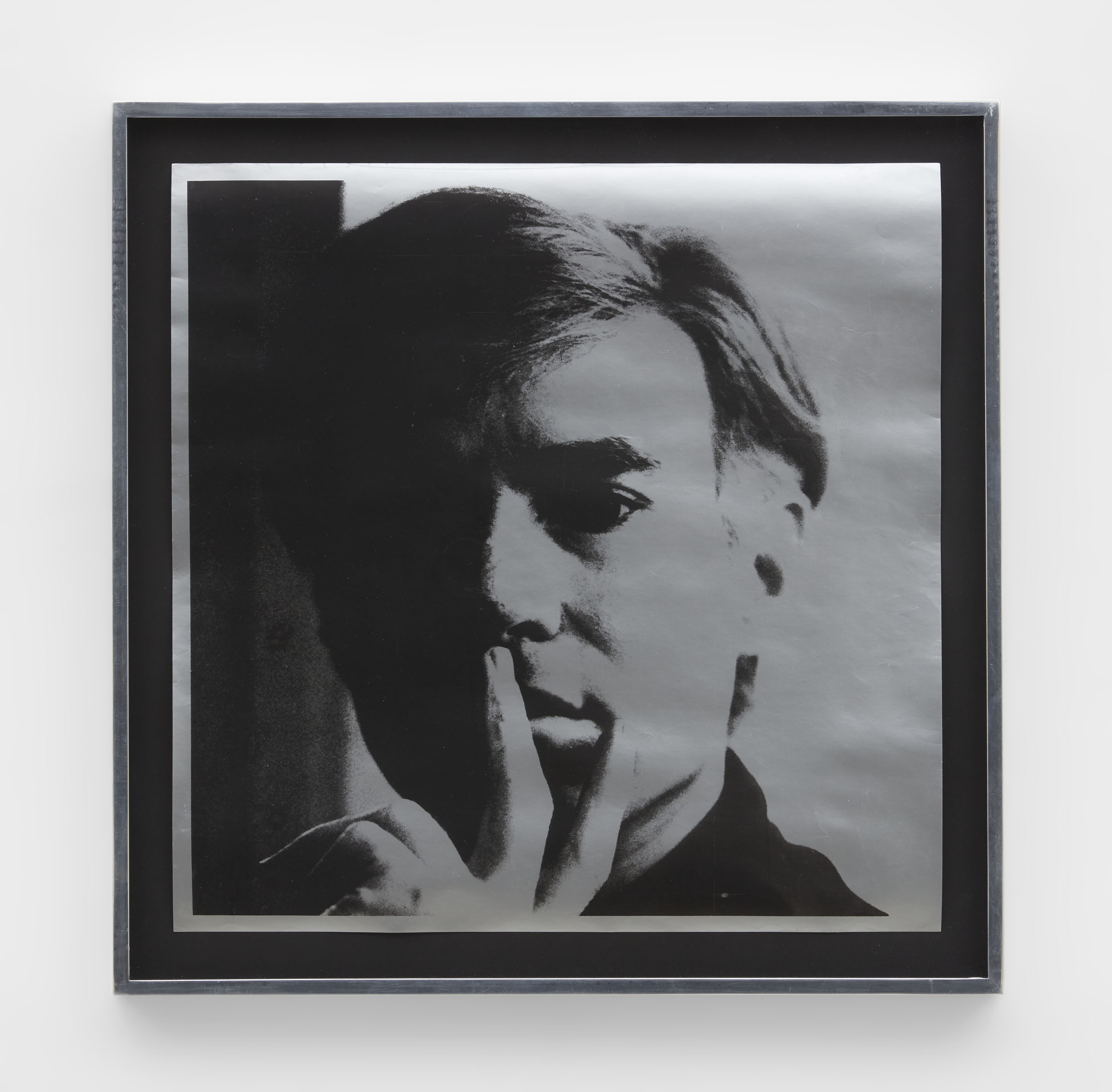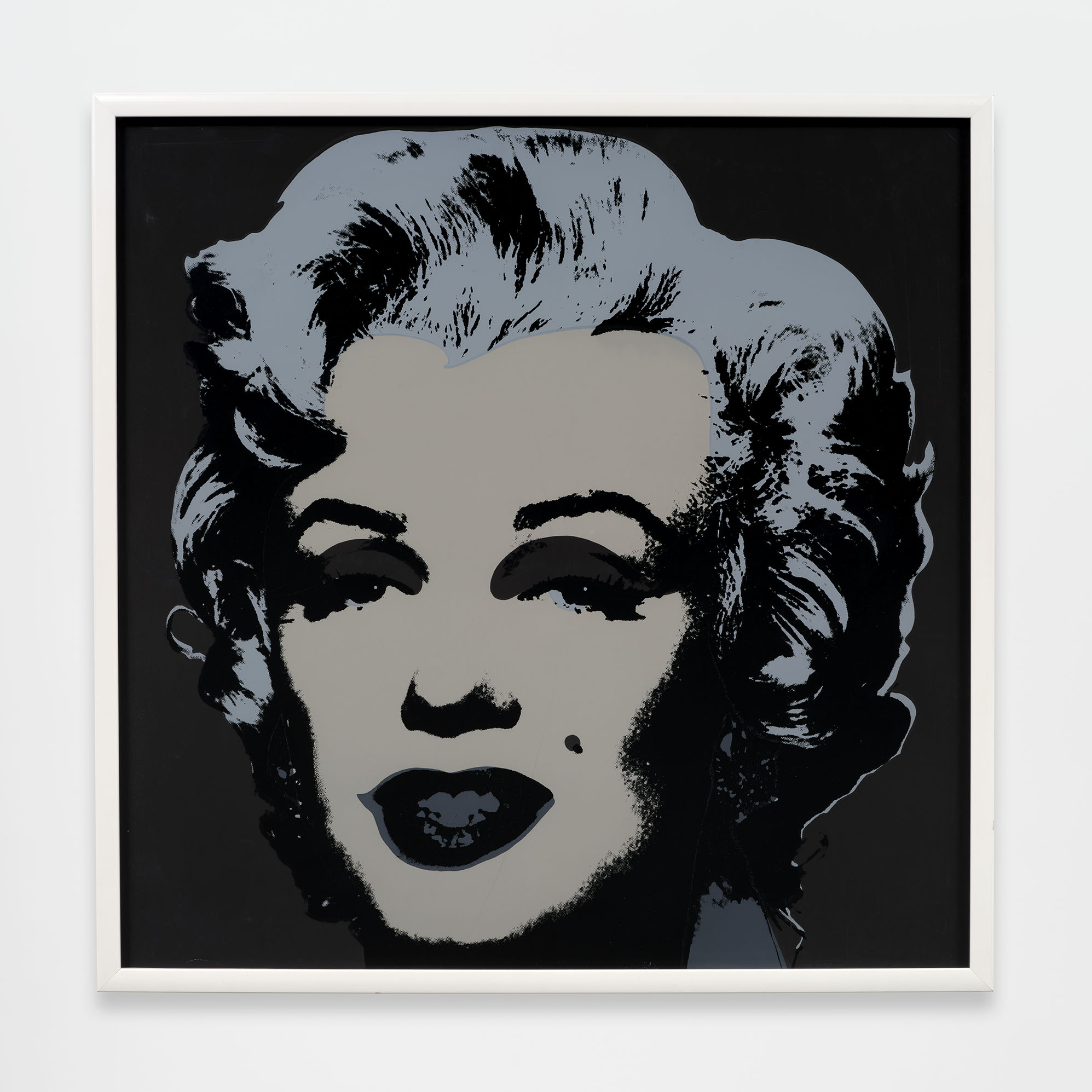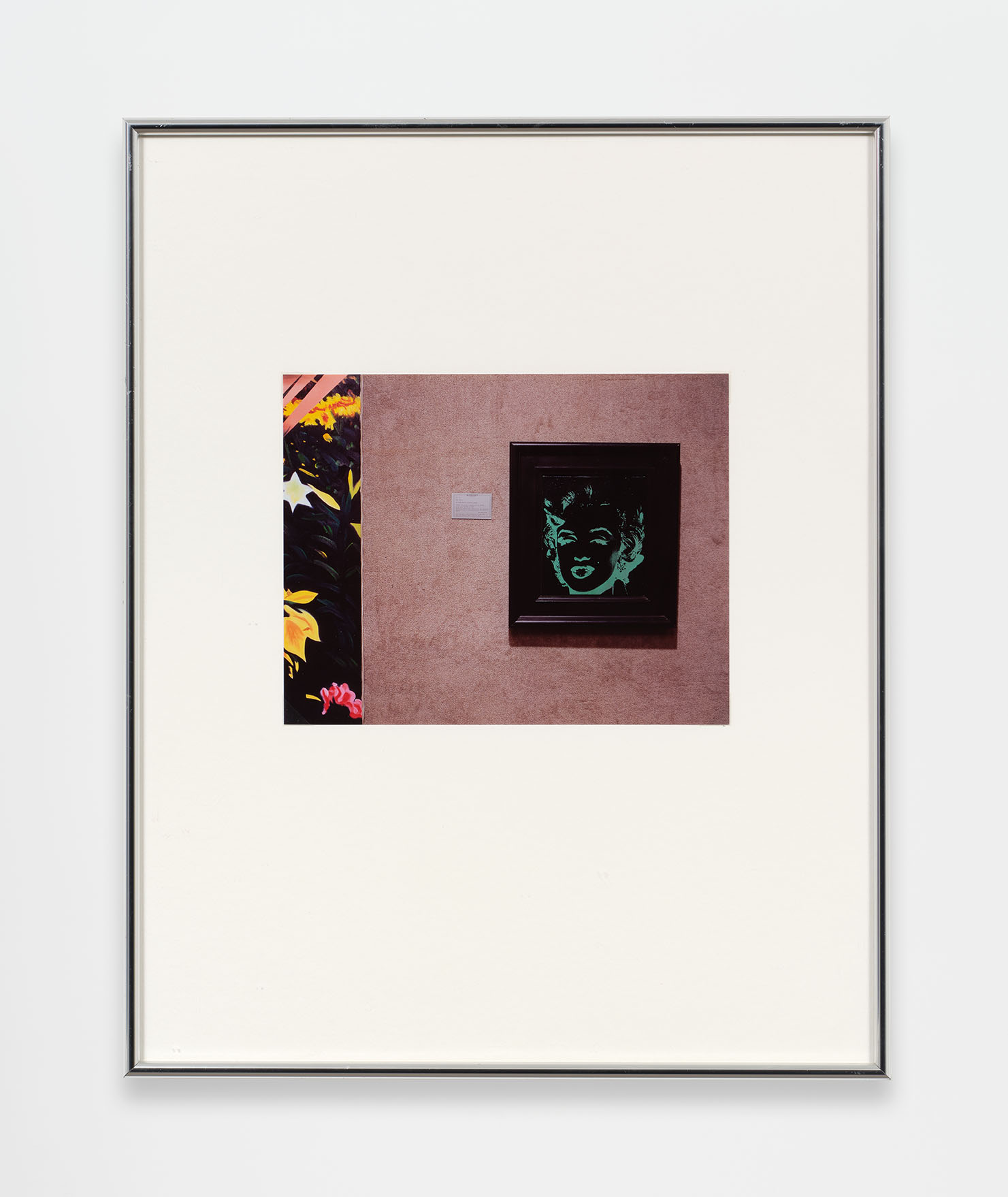Andy Warhol
Marilyn (artist proof), 1967
unique color screenprint
36 x 36 inches
signed, dated and annotated ‘artist’s proof 1/1’
Andy Warhol’s genius was not only in his art but in his ability to reveal how culture manufactures fame. Whether he turned his silkscreens toward Marilyn Monroe, Judy Garland, or the anonymous drag queens he met through New York’s underground scene, Warhol insisted that legends are made—not born.
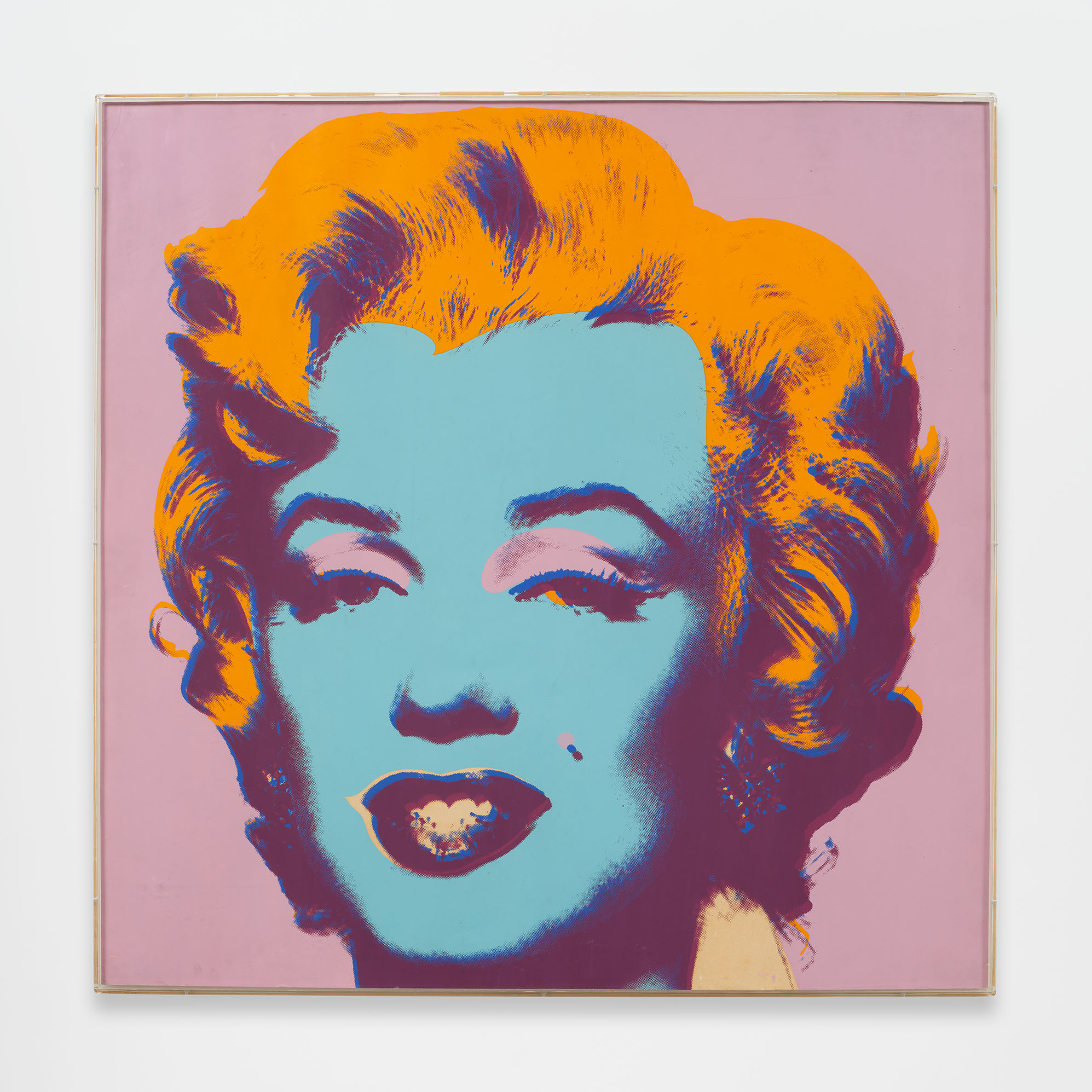
The present work is a unique proof, created at the same time as the set of ten screenprints from 1967, the most celebrated of all of the artist’s graphic productions. It is printed in a color combination that differs entirely from the palettes seen in the final portfolio and in this proof, a color has not been applied to Marilyn’s lips and shirt, with the paper providing the ground layer and the darker screen delineating the hair differs from both the Castelli proof as well as the most closely related F & S #28.
Andy Warhol
Marilyn (artist proof) (detail), 1967
unique color screenprint
36 x 36 inches
signed, dated and annotated ‘artist’s proof 1/1’
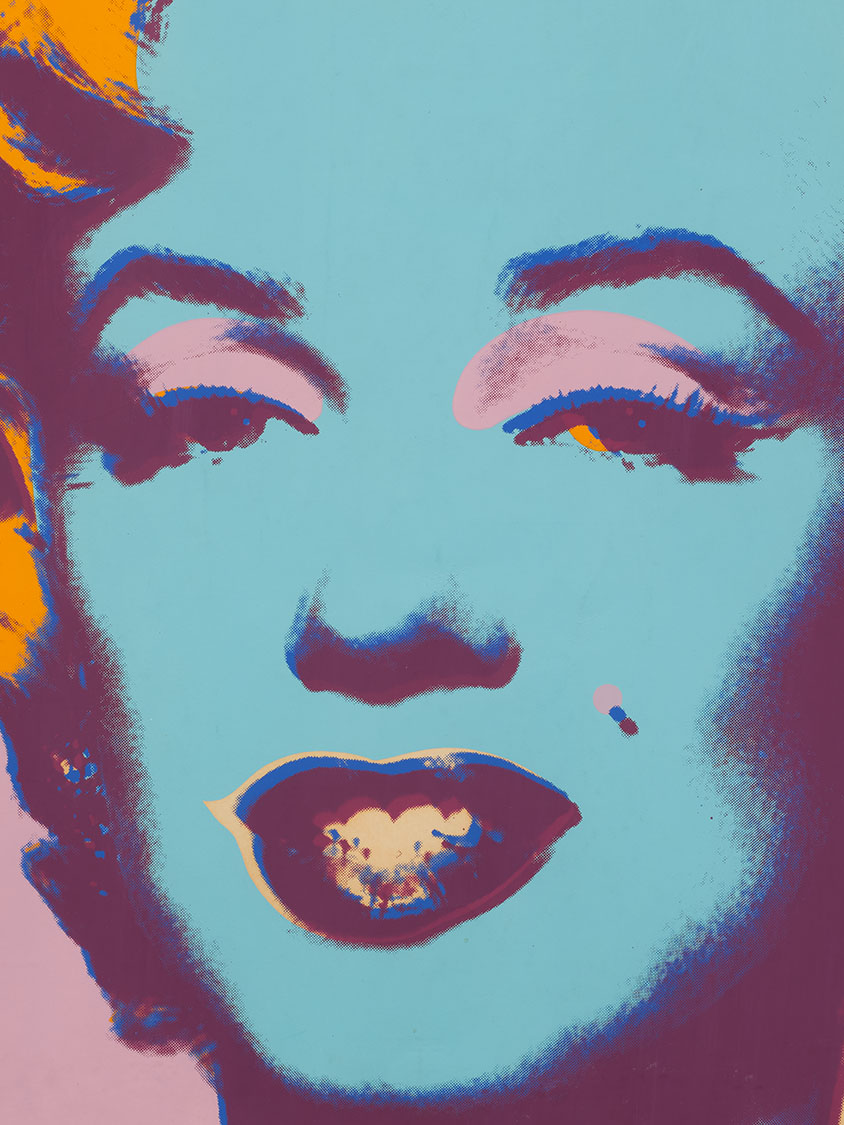
Warhol’s Marilyn is perhaps the ultimate Pop emblem. By repeating her image in electric, unnatural colors, he stripped Monroe of biography and remade her into a commodity—forever glamorous, forever tragic. In contrast, the Blackglama Judy Garland image plays off an existing advertising campaign, doubling the artifice of celebrity. Garland’s face, already mediated by photography and Hollywood mythology, becomes a brand in Warhol’s hands—her private struggles eclipsed by the aura of legend.
Andy Warhol
Blackglama (Judy Garland F&S 351), 1985
Screenprint and colophon
Edition of 190
38 x 38 inches
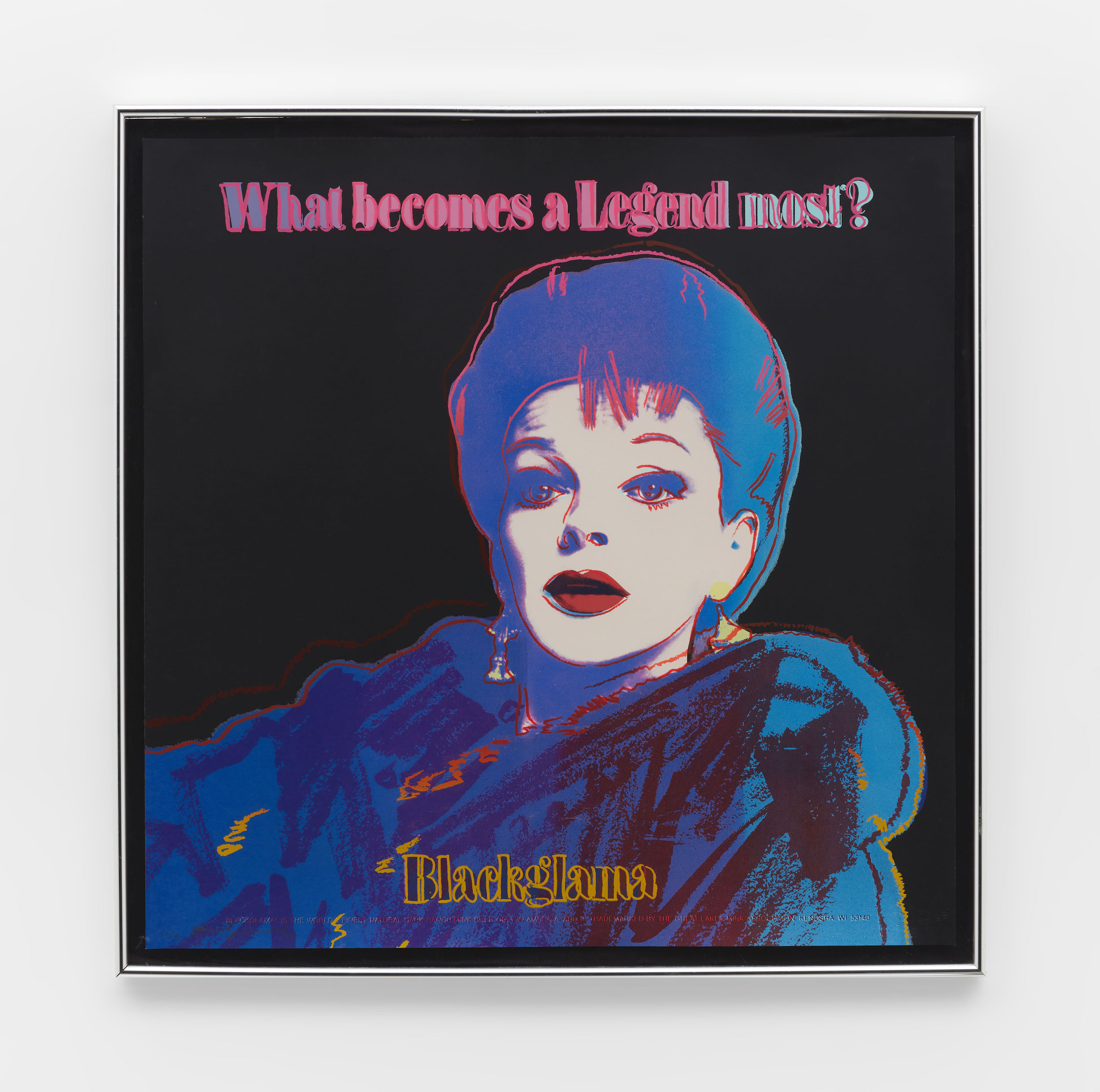
Warhol once said, “In the future, everyone will be world-famous for 15 minutes.” His works here suggest something more nuanced: that fame is not only fleeting but fungible.By placing drag queens alongside Monroe and Garland, Warhol collapsed hierarchies between high celebrity and underground culture. Both depend on image, artifice, and endurance in the public eye.
The silkscreens expose how legends are made: through repetition, bold color, and mediation. Warhol understood that icons thrive not on authenticity, but on the relentless projection of image. His Marilyns glow like neon signs; his drag queens radiate defiance in turquoise and vermilion.

Andy Warhol
From Ladies and Gentleman (Wilhemena Ross), 1975
Synthetic polymer and silkscreen ink on paper
Unique proof
paper: 48 x 38 inches
For Ladies and Gentlemen, Warhol photographed and silkscreened portraits of Black and Latinx drag queens and trans women, many from the fringes of the 1970s downtown scene. Unlike Monroe or Garland, these sitters were not household names; they were performers who created their own glamour against societal rejection. Warhol saw in them the same fierce theatricality as Hollywood’s great stars, but also something radical: the conscious construction of identity as performance.
Andy Warhol
Drag Queen (IIIA.2), 1975
Unique Screenprint
paper: 37 3/8 x 29 1/2 inches

In Warhol’s universe, legends are not just remembered—they are made, multiplied, and consumed. The boundary between Hollywood star and nightclub performer dissolves; each becomes an icon not by destiny, but by image.
Andy Warhol
Self-portrait, 1966
offset lithograph on silver coated paper
edition of 300
paper: 23 x 23 inches
